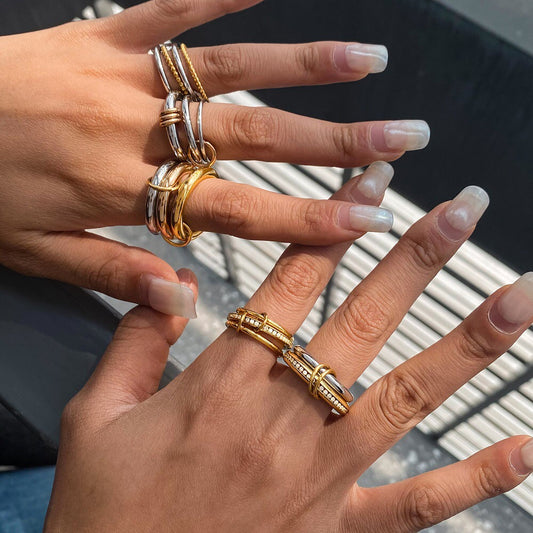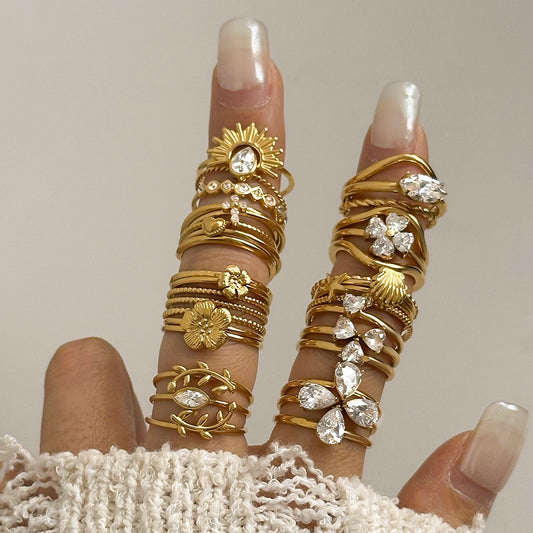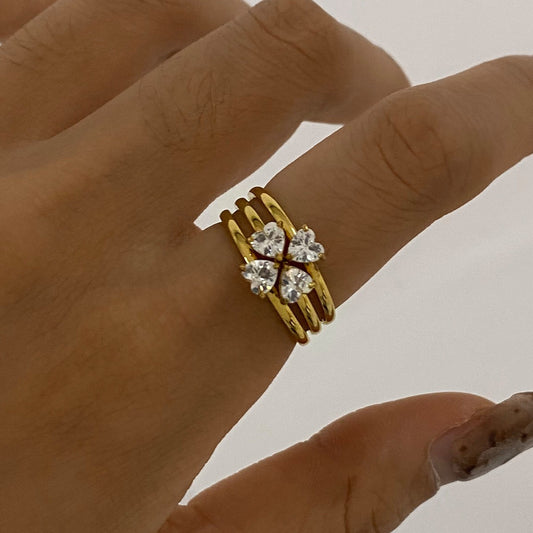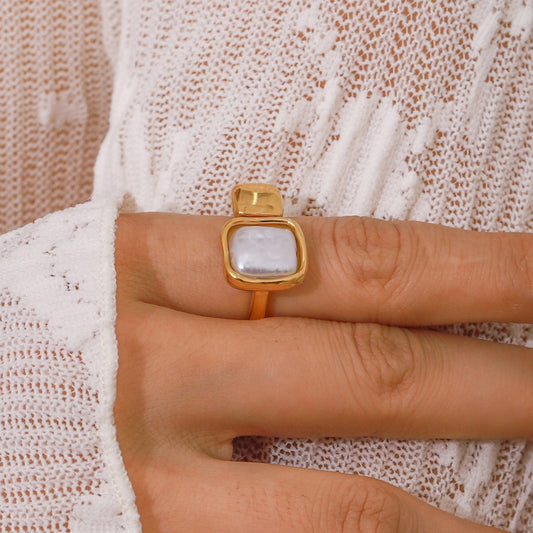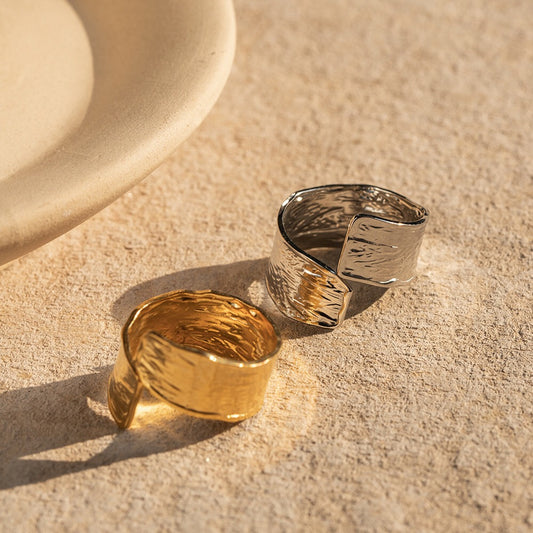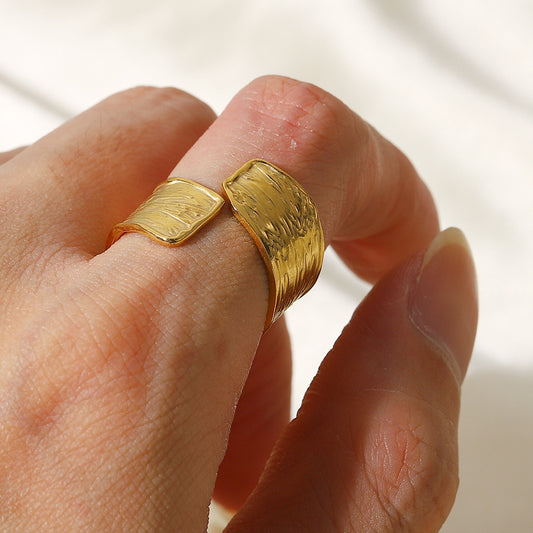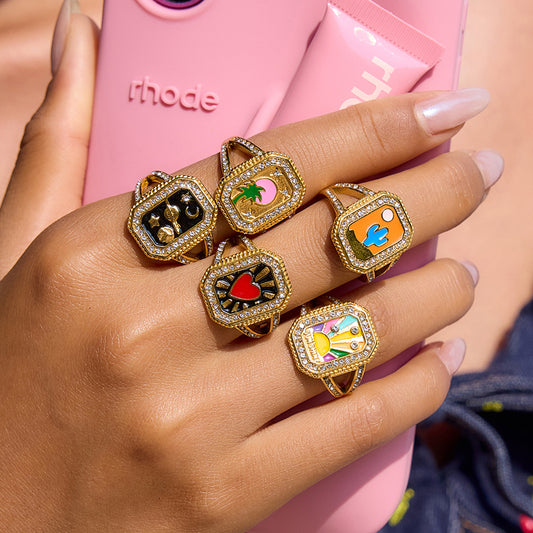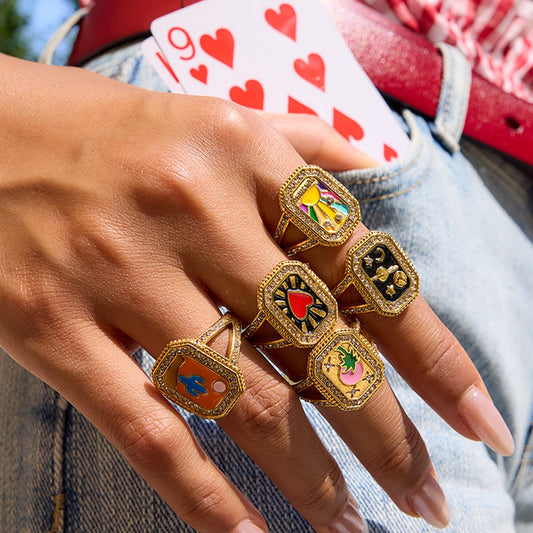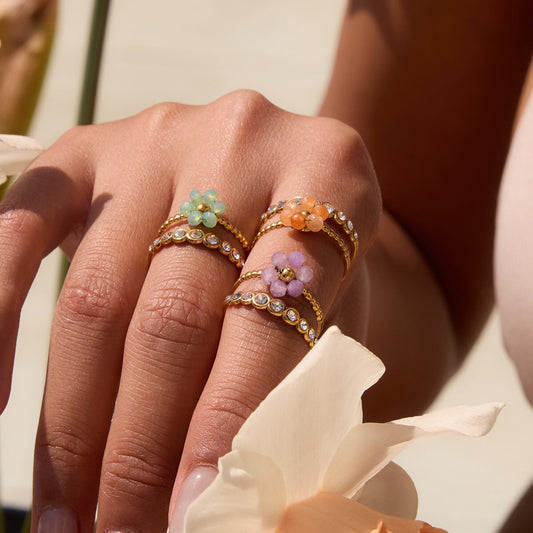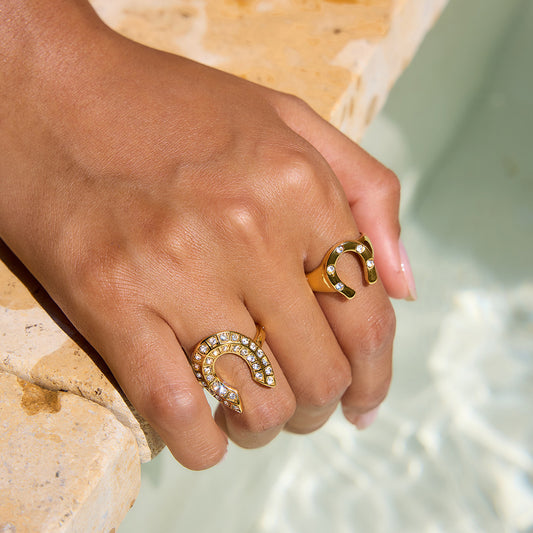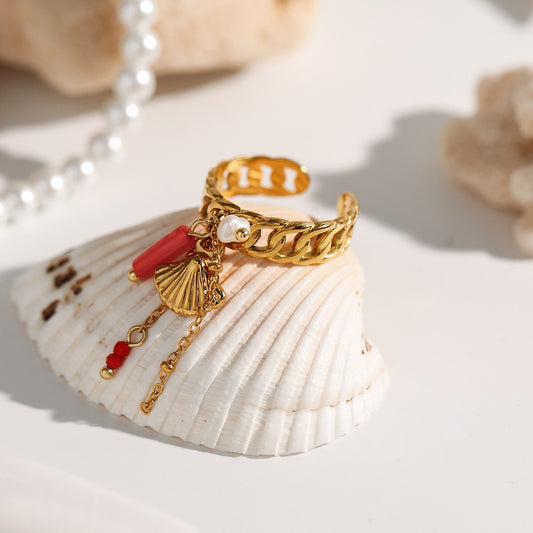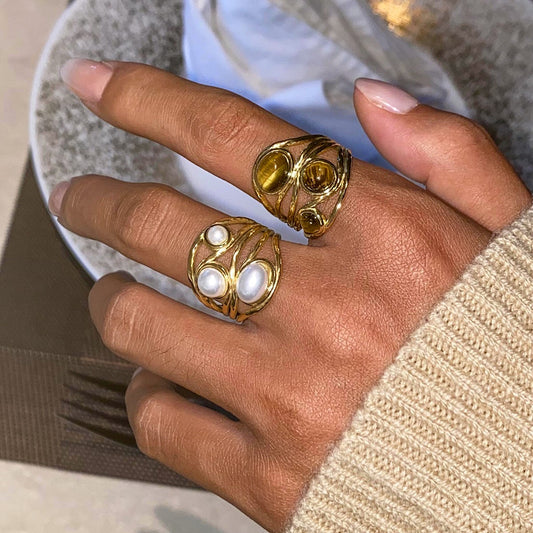Non tarnish rings have become a game-changer in jewelry, with searches for these low-maintenance accessories surging 129% over the past three years (Etsy Trends Report, 2024). The global jewelry market size is projected to grow from $242.79 billion in 2025 to $343.90 billion by 2032, at a CAGR of 5.10% during the forecast period. For anyone tired of watching favorite rings fade to a dull, discolored mess, non tarnish options offer a solution that blends durability, style, and convenience. Unlike traditional silver or plated rings that require constant polishing, non tarnish rings retain their shine through daily wear, workouts, and even exposure to water. Whether you’re looking for an everyday staple, a stackable accent, or a meaningful gift for your girlfriend, these rings check all the boxes. Below, we break down everything you need to know about non tarnish rings—from what they’re made of to how to style them.

What Are Non Tarnish Rings?
Non tarnish rings are jewelry pieces designed to resist oxidation (tarnishing), the chemical reaction that causes metals like silver to darken or discolor over time. Their ability to stay shiny stems from their materials and construction, which prevent exposure to air and moisture from damaging the surface.
Key Materials Used in Non Tarnish Rings
Non tarnish rings rely on specific metals or coatings to avoid tarnish:
-
Stainless Steel: A durable, affordable option that’s naturally resistant to rust and tarnish. It’s often used for everyday and stackable rings.
-
Titanium: Lightweight, hypoallergenic, and completely non tarnish—ideal for active lifestyles or sensitive skin.
-
Tungsten Carbide: Extremely hard, scratch-resistant, and non tarnish, with a sleek, metallic finish.
-
Plated Metals: Base metals (like brass) coated with a thick layer of rhodium, gold, or platinum. High-quality plating (2–3 microns thick) prevents tarnish for years.
-
Palladium: A rare metal similar to platinum, naturally non tarnish and hypoallergenic—often used in luxury non tarnish designs.
How Non Tarnish Rings Differ from Traditional Rings
Traditional rings (like sterling silver or thin-plated fashion jewelry) tarnish because their metal reacts with oxygen, sweat, or chemicals. Non tarnish rings either use metals that don’t react to these elements or add protective coatings to block oxidation. This means they require minimal care, retain their original shine longer, and hold up better to daily wear than their tarnish-prone counterparts.
Why Are Non Tarnish Rings So Popular?
Non tarnish rings have exploded in popularity thanks to their practicality and versatility, solving common pain points for jewelry lovers.

Low Maintenance for Busy Lifestyles
Modern life leaves little time for polishing jewelry—and non tarnish rings eliminate that chore entirely. You can wear them while washing hands, working out, or running errands without worrying about discoloration. This convenience makes them a top choice for anyone who wants stylish jewelry that doesn’t demand constant care.
Durability That Withstands Daily Wear
Non tarnish rings are often made from tough materials (stainless steel, tungsten) that resist scratches, dents, and wear. Unlike delicate plated rings that chip or fade, they hold up to active routines—whether you’re typing at a desk, lifting weights, or chasing kids. Their longevity means you get more value out of each piece.
Hypoallergenic Benefits
Many non tarnish materials (titanium, palladium, stainless steel) are hypoallergenic, making them safe for sensitive skin. Traditional metals like nickel (often found in cheap jewelry) or even sterling silver (with copper alloys) can cause irritation, but non tarnish rings avoid these allergens—perfect for anyone who’s struggled with red, itchy fingers from other rings.
Versatility in Style and Affordability
Non tarnish rings come in every style imaginable—from minimalist bands to gemstone-encrusted designs—at price points for every budget. Affordable options (stainless steel) start at $10–$50, while luxury picks (titanium with diamonds) can cost $500+, making them accessible to everyone. They also come in a range of finishes (silver, gold, rose gold) to match any outfit.

Popular Styles of Non Tarnish Rings
Non tarnish rings blend functionality with fashion, offering styles for every taste—from subtle to bold.
Minimalist Non Tarnish Bands
Sleek, thin bands (2–3mm) in stainless steel, titanium, or rhodium-plated metal are perfect for everyday wear. They’re simple enough for the office, stackable with other rings, and come in plain designs or with tiny engravings (like initials or date). Many feature a matte or polished finish for understated elegance.
Stackable Non Tarnish Rings
Stackable sets are a top trend—sets of 3–5 thin non tarnish rings that can be mixed and matched. They often include designs with texture (hammered, twisted), small gemstones (cubic zirconia, lab-grown diamonds), or colored enamel. Stainless steel or plated stackables are affordable and easy to layer for a trendy, personalized look.
Gemstone-Encrusted Non Tarnish Rings
For a touch of sparkle, non tarnish rings with embedded gemstones are popular. They use durable stones like cubic zirconia, moissanite, or lab-grown diamonds set in stainless steel, titanium, or palladium. These rings work for special occasions or everyday wear—since the non tarnish metal won’t fade around the stones.
Statement Non Tarnish Rings
Bold designs like wide bands (8mm+), geometric shapes, or animal-inspired motifs (e.g., starfish, hearts) make a statement. Tungsten carbide or titanium statement rings are particularly durable, with a heavy, luxurious feel. They’re perfect for adding edge to casual outfits or complementing formal looks.
Wedding/Commitment Non Tarnish Rings
Many couples choose non tarnish metals (titanium, palladium) for wedding bands, as they won’t tarnish or scratch over decades of wear. These rings often feature classic designs (plain bands, channel-set stones) or personalized engravings, blending sentimentality with practicality.

How to Wear Non Tarnish Rings
Non tarnish rings are incredibly versatile—here’s how to style them for any occasion.
Everyday Casual Wear
For a laid-back look, pair 1–2 minimalist non tarnish bands with jeans, a t-shirt, and sneakers. Stack 2–3 thin rings on one finger (mixing finishes like silver and rose gold) for a trendy, effortless vibe. Avoid overstacking (more than 5 rings per hand) to keep the look polished.
Workwear Styling
Keep it professional with 1–2 subtle non tarnish rings—like a plain titanium band or a small gemstone ring. Avoid wide or noisy designs that could distract in meetings. A single rhodium-plated band or a stack of 2 thin rings complements blazers, blouses, and tailored pants perfectly.
Formal Occasions
Elevate formal outfits with a statement non tarnish ring—like a wide tungsten band with moissanite stones or a palladium ring with a central gem. Pair it with a gown, cocktail dress, or tailored suit, and keep other jewelry minimal (e.g., small earrings, a delicate necklace) to let the ring shine.

Mixing Metals and Textures
Don’t be afraid to mix non tarnish metals—silver stainless steel with rose gold-plated rings, or titanium with palladium. Add texture by pairing a hammered non tarnish band with a smooth stackable ring. The key is balance: mix 2–3 metals max to avoid a cluttered look.
Non Tarnish Rings: Perfect Gift for Your Girlfriend
A non tarnish ring is a thoughtful, practical gift for your girlfriend—combining style, durability, and sentimentality.
Why It’s a Great Gift
Unlike trendy jewelry that fades or tarnishes, a non tarnish ring will last for years, reminding her of you every time she wears it. It’s practical (she can wear it daily without care) and versatile (fits her lifestyle, whether she’s active or loves dressing up). Plus, the wide range of styles means you can find something that matches her personality.
Choosing the Right Style for Her
-
Minimalist Girlfriend: Opt for a thin titanium or rhodium-plated band, or a small gemstone ring with her birthstone.
-
Trendy Girlfriend: A stackable set of non tarnish rings with texture or enamel accents.
-
Active Girlfriend: A durable tungsten or titanium band—scratch-resistant and perfect for workouts or outdoor activities.
-
Sentimental Girlfriend: A personalized non tarnish ring with engravings (initials, anniversary date, or a short message like “My Love”).
Adding a Personal Touch
Make the gift extra special by customizing it: engrave her name, a meaningful date, or a quote. Choose a ring with her birthstone or favorite color (enamel accents are great for this). Many jewelers offer free engraving for non tarnish rings, making it easy to create a unique piece.
How to Clean Non Tarnish Rings
While non tarnish rings resist discoloration, they still need occasional cleaning to remove dirt and oils—though the process is simple.
Basic At-Home Cleaning
For most non tarnish rings (stainless steel, titanium, plated metals):
-
Mix a few drops of mild dish soap with warm water in a bowl.
-
Soak the ring for 5–10 minutes to loosen dirt.
-
Gently scrub with a soft-bristled toothbrush (focus on crevices or gemstone settings).
-
Rinse thoroughly with warm water and dry with a lint-free microfiber cloth.
Cleaning Gemstone-Encrusted Non Tarnish Rings
For rings with gemstones (cubic zirconia, moissanite):
-
Avoid harsh cleaners (like ammonia) that can damage stones.
-
Use the same soapy water method, but scrub gemstones gently to avoid loosening them.
-
For stubborn grime, use a cotton swab dipped in soapy water to clean around the setting.
Maintenance Tips to Keep Them Shining
-
Remove non tarnish rings before swimming in chlorinated water or using harsh chemicals (like bleach or cleaning products)—while the metal won’t tarnish, chemicals can damage gemstones or plating.
-
Avoid wearing rings while applying lotion, perfume, or hair products—these can leave a film on the metal.
-
Store rings in a jewelry box or soft pouch to prevent scratches (even non tarnish metals can scratch each other).
-
Polish plated non tarnish rings with a jewelry polishing cloth every 3–6 months to refresh the finish.
Non Tarnish Rings: Shine That Lasts Forever
Non tarnish rings have redefined what we expect from jewelry—combining style, durability, and low maintenance into pieces that work for every lifestyle. Whether you’re tired of tarnished silver rings, need hypoallergenic options for sensitive skin, or want a meaningful gift for your girlfriend, these rings deliver on all fronts. From minimalist bands to statement designs, they retain their shine through daily wear, workouts, and special occasions—no polishing required.
Ready to add non tarnish rings to your jewelry collection (or gift one to your girlfriend)? Start by considering her style and lifestyle—opt for titanium or tungsten for active days, stackables for trendsetters, or personalized engravings for sentimental moments. Browse trusted retailers like Etsy, Mejuri, or local jewelers for high-quality options. If you’re unsure about the right size or style, share her preferences in the comments below—we’ll help you narrow it down. And don’t forget to tag us in your non tarnish ring looks—we can’t wait to see how you rock that long-lasting shine!






